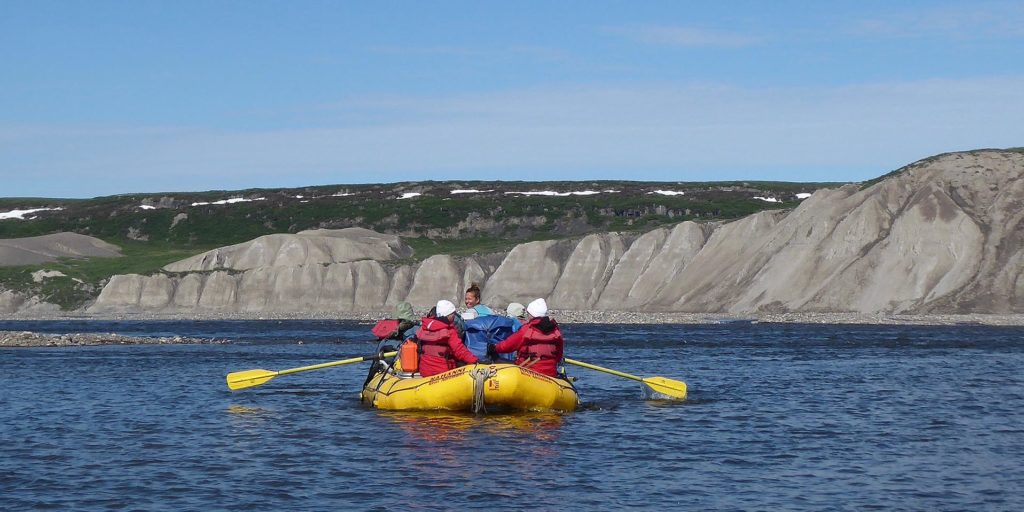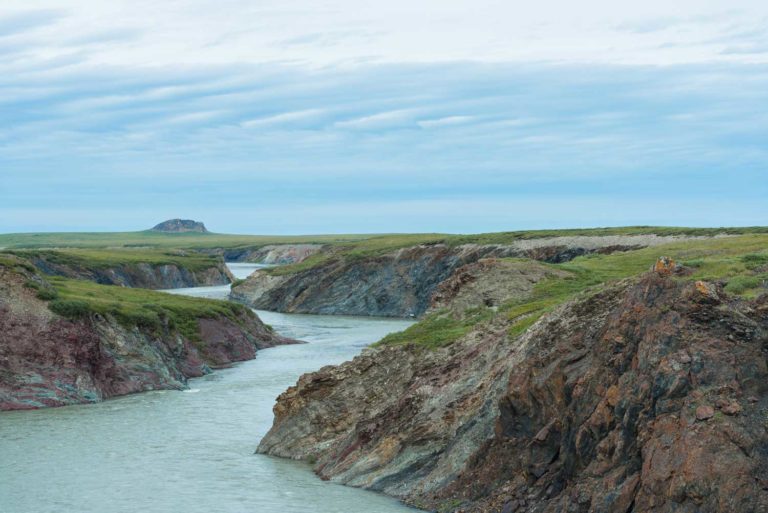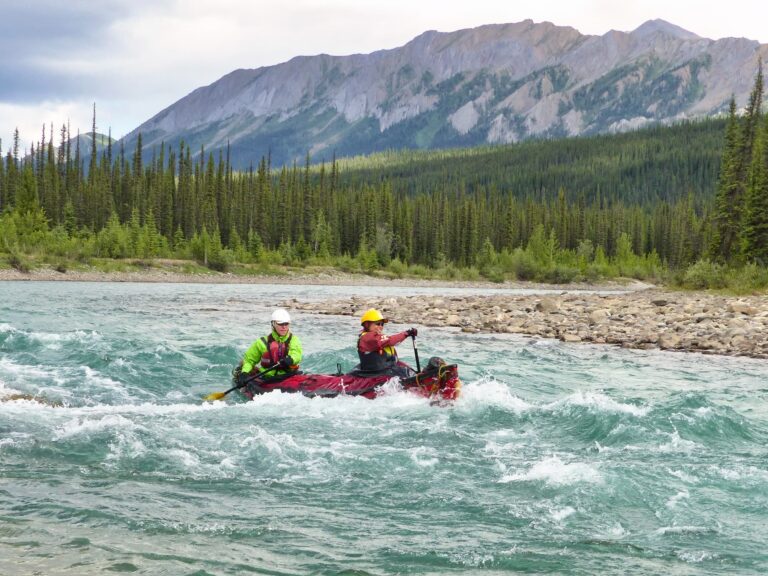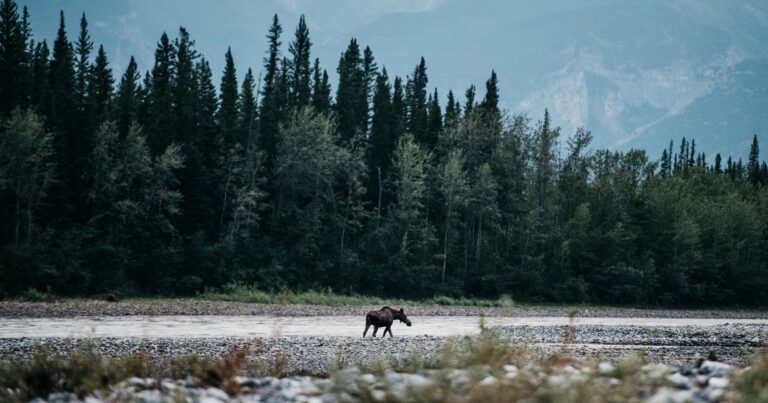As we navigate the pristine rivers of the Canadian Tundra ( Firth River, Coppermine River and Horton River), we are often graced with a remarkable sight – the majestic muskoxen. These enigmatic creatures are nothing short of exotic, captivating us from head to hoof. While their striking appearance draws us in, it’s their remarkable adaptations for thriving in the unforgiving Arctic climate that truly mesmerize us, keeping our binoculars trained on their every move throughout the year.
Northwest Territories Biologists tell us that approximately 90,000 years ago when the Bering Straits were dry land, muskoxen crossed into North America from Siberia. When the last glacier covered North America, muskoxen survived in ice-free areas or “glacial refugia” in the northern arctic islands and Greenland. As the ice retreated, they spread throughout northern Canada and Greenland, then westward into Alaska.
Most of the approximately 80,000 – 90,000 muskoxen in Canada are found on the arctic islands, but significant numbers occupy the river valleys of the tundra rivers.
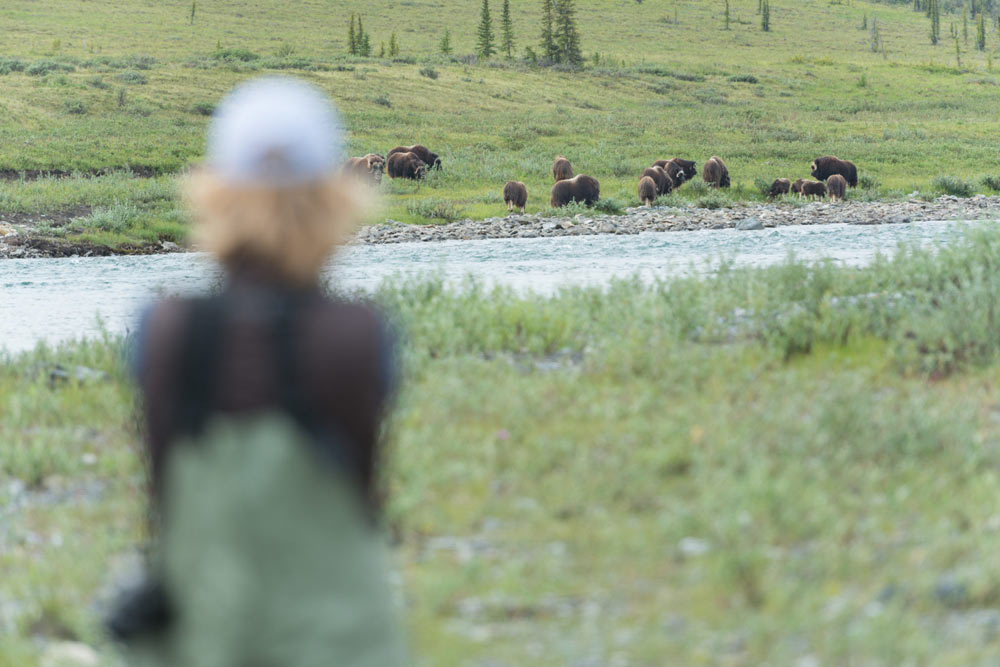
How can these large creatures find enough food in the tundra environment? Muskox food varies from season to season. In summer, muskoxen range river valleys, along lake shores and in seepage meadows for browse such as willow, sedge, rushes, grasses, willow herb, bladder campion, knot weed and fleabane.
This is good news for river travellers in search of photo opportunities! In winter, the herds spend more time on hilltops, slopes and plateaus where vegetation such as grasses, crowberry, bilberry and willow is exposed by arctic winds. Winter would seem to be a formidable challenge for survival.
In truth, most winters, muskoxen are easily able to find enough browse on windblown hilltops, provided the weather is cold and the snow is not too deep. Trouble occurs if rain or sleet falls late in the year, or frequent thawing and freezing occurs, a crust of ice may form over the tundra, followed by deep snow. Under such circumstances, muskoxen have great difficulty in foraging beneath the ice and may die of starvation. Normally, if there is only a light crust of snow over the vegetation, muskoxen can break through by pawing. A stronger crust can be broken by the animal lifting its head and dropping its nose onto the surface. The muskox then paws in the crater, pushes away the broken ice and feeds on the exposed browse.
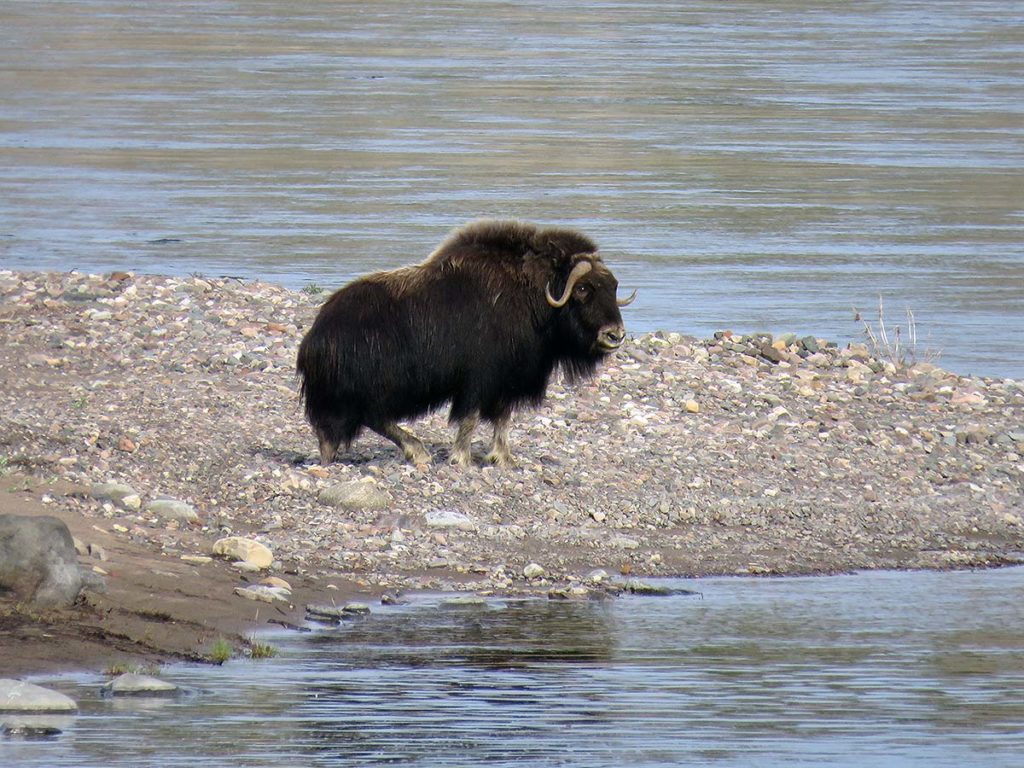
River travellers observe that muskoxen are gregarious animals and live in loosely organized herds. Herd size and composition vary with season, range conditions and the number of bulls in the population. An average herd is about 15 animals. After the rut in July and August, the herds increase as bulls and/or mixed groups join together. The presence of wolves may cause an increase in herd size in response to harassment. Some groups of muskoxen may merge together for feeding, while in severe winters large herds may fragment as a result of limited forage.
The large heard members stand side by side with formidable horns facing outwards. While effective against wolves, the strategy is suicidal when used against hunters with rifles. Eco-travellers are best advised to keep “binocular distance” away from the creatures. The large animals can “charge” at surprisingly high speed. When feeling threatened, the animal will often first rub glands in the nose region with a paw. This is a last resort signal to back off and give them some space.
Unlike caribou, muskoxen do not undertake long migrations, but in some areas, such as near Coppermine, winter and summer ranges are distinct and as much as 160 km apart. On treks between ranges, a dominant bull or cow leads the group.
The economic potential of the muskox’s inner wool or “qiviut” is slowly being explored in the Northwest Territories. This wool is of exceptional quality, having the weight and warmth of cashmere. In Alaska, a muskox domestication project has been established for the purpose of developing a cottage industry that specializes in woven or knitted articles.
Always a delight to find and watch, the muskox is a highlight of any tundra expedition.


